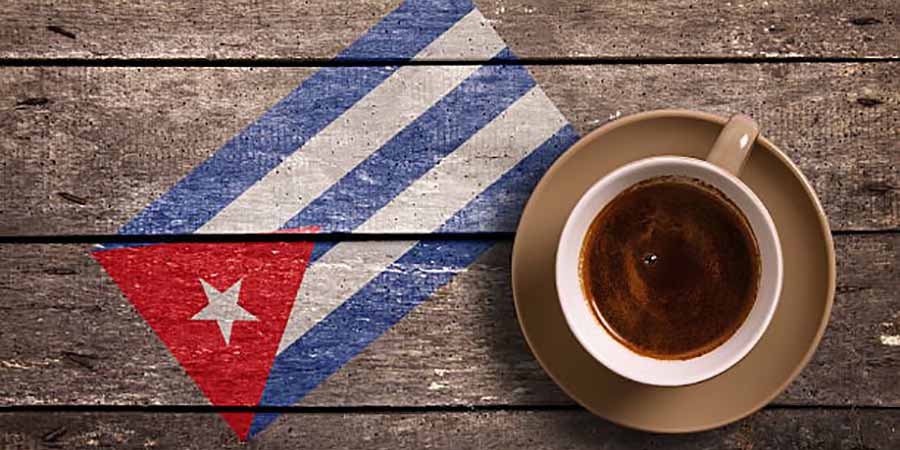Add description, images, menus and links to your mega menu
A column with no settings can be used as a spacer
Link to your collections, sales and even external links
Add up to five columns
Add description, images, menus and links to your mega menu
A column with no settings can be used as a spacer
Link to your collections, sales and even external links
Add up to five columns

What is Cuban Coffee?
March 29, 2018 3 min read
What is Cuban Coffee?
Cuban Coffee: A Comprehensive Guide
Cuban coffee, known for its rich flavor and cultural significance, is a staple in Cuban society. This guide explores the history, growing regions, market challenges, traditional drinks, and social aspects of Cuban coffee, providing a comprehensive understanding of this beloved beverage.
The History of Cuban Coffee
Coffee cultivation was introduced to Cuba in the mid-1700s, and by 1790, significant amounts of Cuban coffee beans were being exported to Spain. The industry expanded when French coffee farmers began farming in Cuba. By the 1820s, coffee bean sales exceeded sugar sales, and by the early 1950s, exports reached 20,000 tons.
The Cuban Revolution of 1956 nationalized coffee farms, leading to a decline in the industry. Production languished during the 1960s and 1970s, then surged in the late 1970s and 1980s. The principal benefactor during this period was the Soviet Union. With its fall in 1990, Cuba's coffee growing industry began to wane again.
Cuban Coffee Growing Regions
Sierra Maestra Mountains: Located in eastern Cuba, this region has a favorable climate and fertile, reddish-brown soils rich in humus, allowing for coffee cultivation without chemical fertilizers. The towns in Sierra Maestra have a history of hand-picking coffee cherries, which are then carried by mule to drying areas.
Escambray Mountains: Another significant coffee growing region located in central Cuba. Other regions include Guaniguanico in the West and Nipe and Sagua-Baracoa Mountains in the East.
Cuban Coffee Market Difficulties
Cuban coffee farmers face challenges such as excessive rainfall followed by drought, poor road conditions, and reliance on traditional methods. These factors hinder access to labor and modern farming techniques, impacting overall production.
Cafecito: Traditional Cuban Coffee
Cafecito, also known as Cafe Cubano, is a type of espresso coffee developed in Cuba. It is made by sweetening a shot of espresso with demerara sugar during the brewing process. This method creates a smooth, unique flavor.
How to Make a Cafecito at Home:
- Fill a small cup with your desired amount of granulated sugar.
- Pack your espresso machine and start the shot.
- Let the first few drops of espresso fall into the sugar cup, then switch to your regular espresso cup.
- Quickly stir the sugar and droplets to form a pale, thick foam (espumita).
- Pour the espumita over the finished espresso shot, stir, and enjoy.
Types of Cuban Coffee
- Cafecito (Café Cubano): A strong, sweetened espresso served in a small cup.
- Colada: A larger, shareable version of Cafecito, served in a large glass with small demitasse cups.
- Café Con Leche: Unsweetened coffee with hot, steamed milk, traditionally served at breakfast.
- Cortadito: A sweet coffee beverage made with Cafecito and warmed evaporated milk.
The Special Flavor of Cuban Coffee
The unique flavor of Cafecito comes from the initial mixing of espresso and sugar, which creates a light brown paste (espumita) that gives the coffee a smooth quality. This process differs from adding sugar at the end, resulting in a distinct taste.
The Social Aspects of Cuban Coffee
In Cuba and among Cuban communities globally, drinking Café Cubano (Cafecito) is a daily cultural and social activity. A Colada, meant for sharing, consists of four to six shots of coffee served in a large glass with small demitasse cups. In some social circles, the tip of a Cuban cigar may be dipped in the demitasse before being lit.
Experience Cuban Coffee
If you visit Cuba, experiencing Café Cubano is a must. The rich flavor and cultural significance make it a memorable part of Cuban heritage.
By understanding the history, growing regions, market challenges, and social importance of Cuban coffee, you can appreciate this unique beverage even more.
Guatemala Antigua Coffee
Subscribe
Sign up to get the latest on sales, new releases and more …
